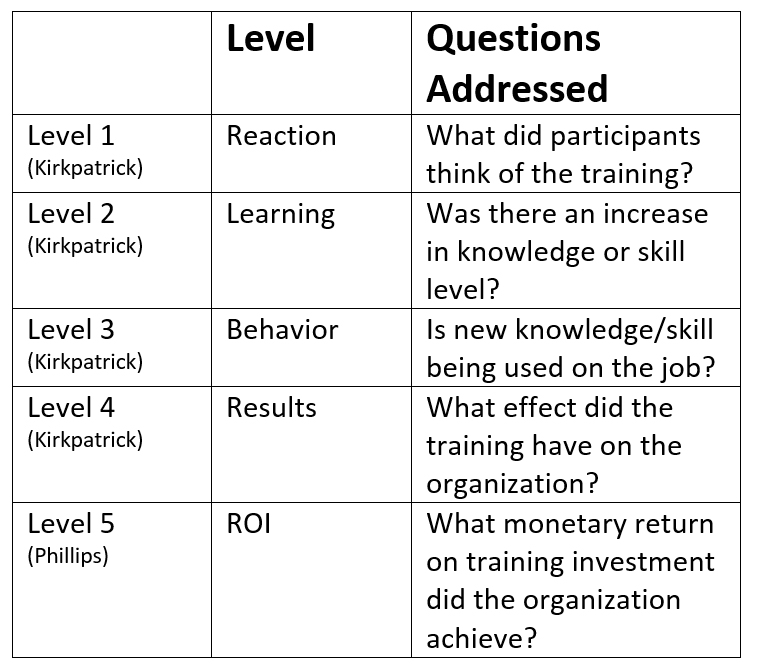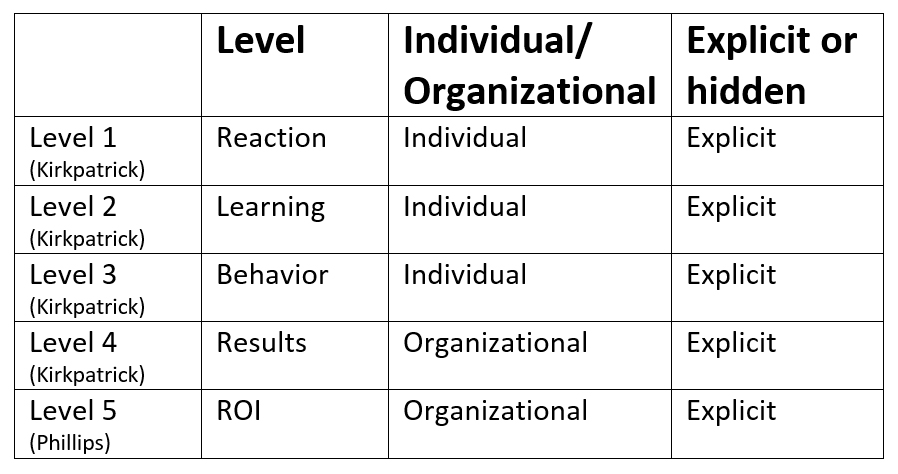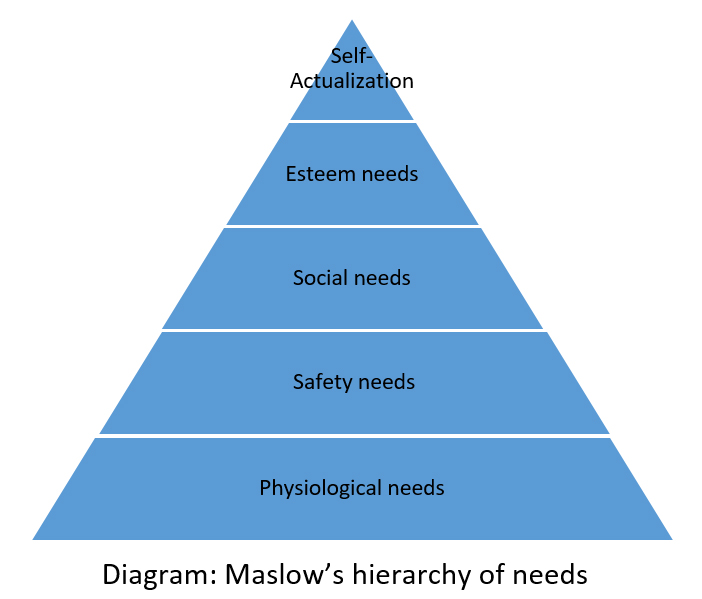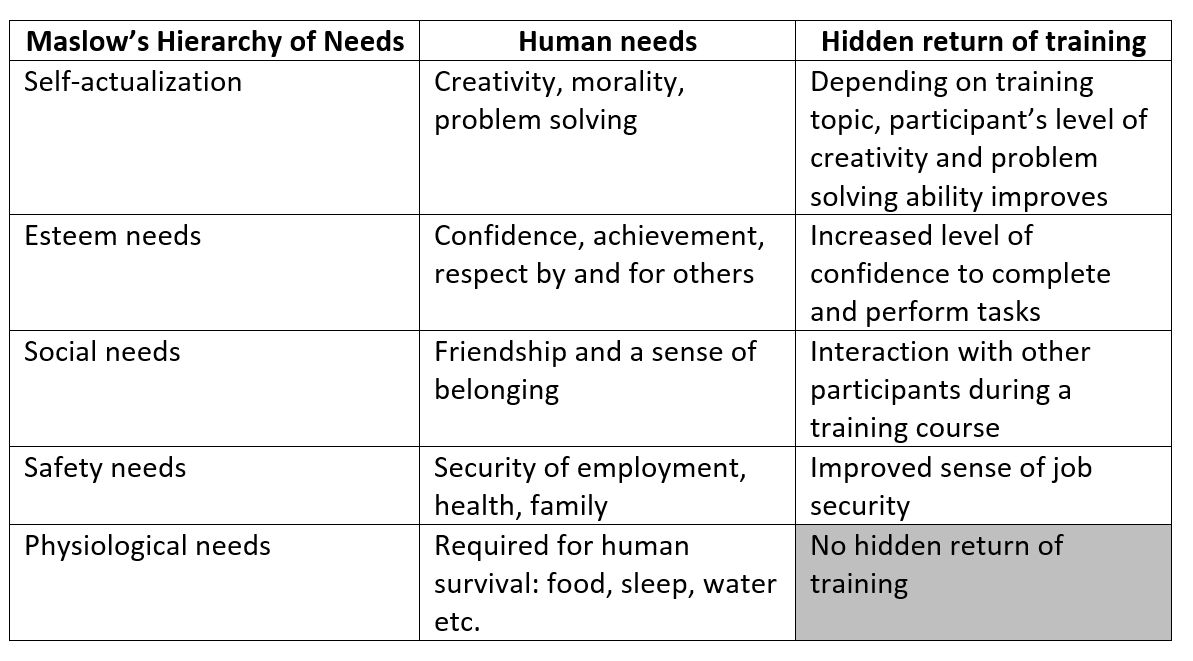The explicit and hidden returns of training
A spark is all it takes to analyze matters thoroughly and this article was triggered by a legitimate question once received from a client – What is the return on investment (ROI) in training? I found myself reiterating a textbook answer by focusing on monetary costs, benefits and the ROI formula. But hold on a second (a sounding voice whispering in my ear), is ROI restricted to matters of monetary costs and benefits? My answer is a definite NO. The return on training investments are greater than just the explicit tangible returns. Training offers quantitative, explicit benefits that can be converted to monetary values as well as hidden, qualitative benefits that cannot be converted to monetary values or would require a lot of time and effort to convert.
Ask a finance professional on the meaning of return on investment and you would probably learn that it is a performance measure used to evaluate the efficiency of an investment, in other words, ROI measures the amount of return on an investment relative to the investment’s cost. To calculate ROI, the benefit (or return) of an investment is divided by the cost of the investment, and the result is expressed as a percentage or a ratio. i

Two key terms (benefits and costs) are used in this definition. From a conventional accounting perspective, benefits are the improvements in performance measured in monetary terms that are a direct consequence of the training. Costs are all fees (direct and indirect) paid by the organization for the concerned training. With these terms explained in this way, one could say that this formula can be used to measure a training’s ROI. However, are those monetary benefits the only benefits of a training intervention?
To begin to understand the answer to the above question, we need to have a deeper understanding of what training is and what benefits can be gained. By definition training is the action of teaching a person a particular skill or type of behaviorii. In organizations this requires a set of organized activities aiming to impart knowledge, enhance skills and influence attitudes. Positive changes in behavior at the individual level improves individual performance, and this spills over to the organizational level in the form of improved organizational productivity. Therefore the return on training investment is both individual and organizational, with some aspects easily convertible into a monetary value while others would be very difficult to convert.
From many organizations’ perspective the focus is on making sure that every dollar spent on training yields monetary benefits. This is a logical equation for any private organization whose focus is profitability and the bottom-line. But it is not so true for government entities whose primary focus is on elevating the abilities of national talent and creating a sense of job and social security.
Regardless of the type of organization (private or government) and the reason behind measuring the return on training, a formal methodology for calculating returns should exist. Perhaps the most widely used models are the new world Kirkpatrick model and Jack Phillips’ ROI model and process.
The table below summarizes the phases of the models:

Do such proposed models measure returns from an individual or organizational perspective? And are the measured returns explicit or hidden?

Level 1, 2 and 3 (reaction, learning and behavior) measure the results of training from an individual perspective. These 3 levels focus on measuring the participant’s overall satisfaction with the training, the amount of learning that occurred during the training and the new behaviors applied on the job following the training respectively. All of which fall under the control of the employee/participant attending the training. Level 4 and 5 (Results and ROI) measure the results of training from an organizational perspective. Those two levels focus on measuring results the organization obtained from training and the monetary return the organization achieved respectively. Levels 1, 2, and 3 are a prerequisite for achieving positive returns at levels 4 and 5. Employees with positive reactions to training courses, multitude of lessons learned and application of new behaviors on the job will allow the organization to achieve positive results in both level 4 and 5. The opposite is also true and this explains the chain of impact and correlation among all five levels.
Do such proposed models measure returns from an individual or organizational perspective? And are the measured returns explicit or hidden?
All the levels of measures of returns in the models above are explicit. Explicit in the sense that they are observable, tangible and measurable. A positive reaction to a course can be observed by the facilitator and measured post program through a course feedback form. Learning gained from a course can be tangibly measured by administering a pre and post-test and comparing results. Application of behavior on the job can be observed by the direct supervisor and closely monitored by the use of post course action plans and checklists. These returns however are not easily converted into monetary value. Improved results from an organizational perspective appears on reports with increased sales, fewer incidents and reduced costs. Levels 4 and 5 are the only return levels that can be monetized and included as benefits in the conventional ROI formula. This means that even when we consider the explicit returns, the ROI formula does not take into consideration all the benefits of the training.
Let’s look now at the hidden benefits and see if they can they be converted to a monetary value? According to the theory of human motivation, famously known as Maslow’s hierarchy of needs which describes patterns and stages of motivation that humans generally move through, there are 5 different levels as seen in the diagram below:


Examining the levels in detail reveals the hidden return of training from an individual perspective. A successful training course satisfies 4 of the 5 levels of needs (top 4: self-actualization, esteem needs, social needs and safety needs).

Other hidden returns reported following training were increased job satisfaction, reduction of employee stress, increased motivation, improved teamwork, increased cooperation and improved communication. All of which are individual hidden returns. The list of hidden returns is far more encompassing and includes also organizational hidden returns such as and not limited to: improved work climate, reduced employee turnover, increased innovation, increased customer satisfaction, enhanced community image, fewer customer complaints and faster customer response timeiii . All these hidden returns can be measured but cannot be easily converted into monetary values thereby distorting even more the conventional ROI formula that is so often used.
Training solutions have both explicit and hidden returns, most of which cannot be converted into a monetary form. We often focus on the explicit tangible returns from the organizational and individual perspective and ignore the hidden intangible returns. Both returns should be measured and reported in their respective quantitative and qualitative means.
i http://www.investopedia.com/terms/r/returnoninvestment.aspii http://www.oxforddictionaries.com/definition/english/training
iii How to Measure Training Results, Phillips and Stone, p: 224
Related Articles

A Workplace Counseling Tale
In the heart of Dubai, nestled amidst towering skyscrapers and the hum…

Building a Culture of Continuous Learning
During times of turmoil and when it comes to reduced corporate spending,…

People Analytics: Transforming Organizations Through Power of Data
Data is crucial in shaping business strategies and decision-making processes…

The Impact of AI on the Corporate Training Industry
Having been at the forefront of corporate training for two decades, I…
